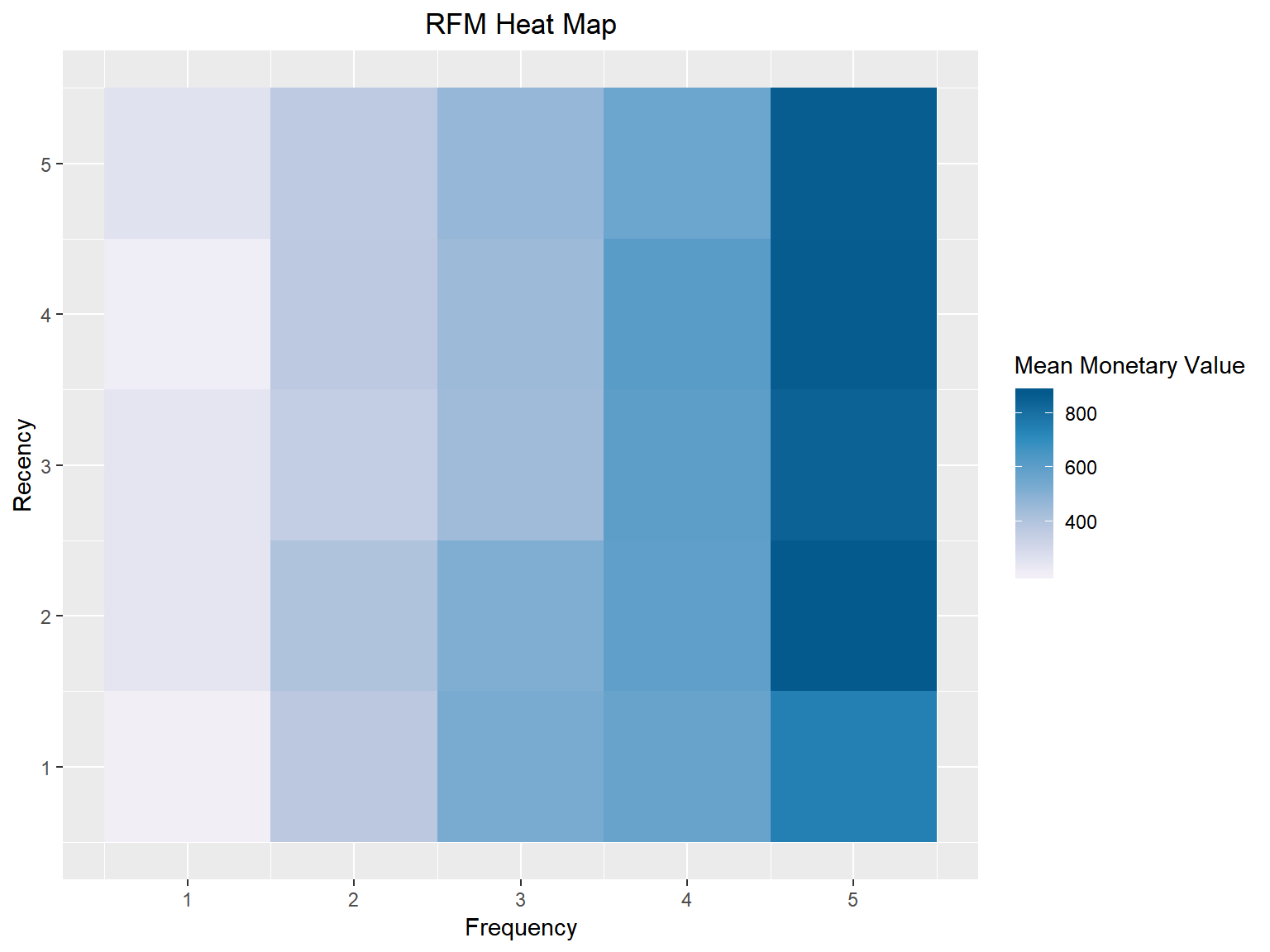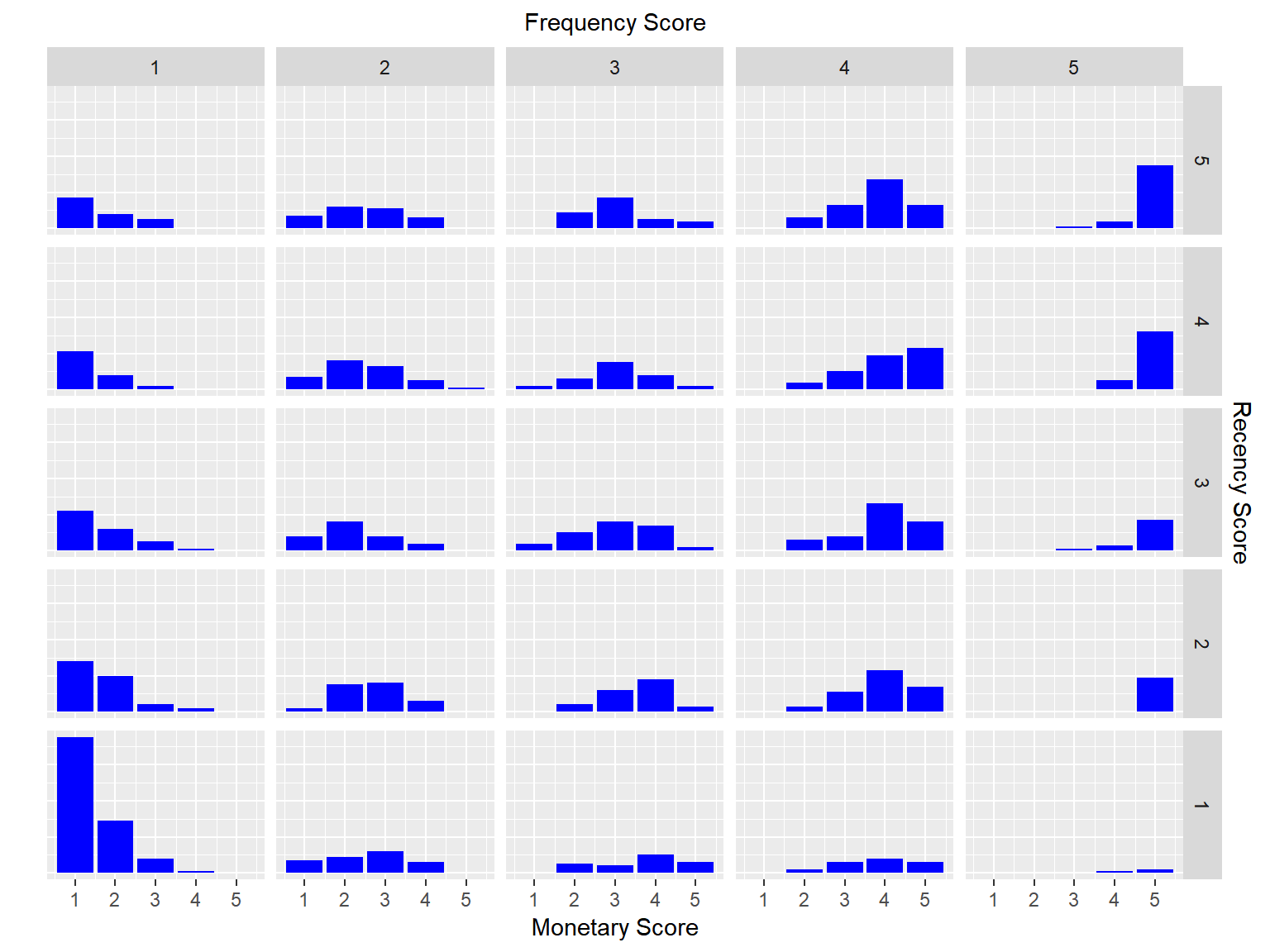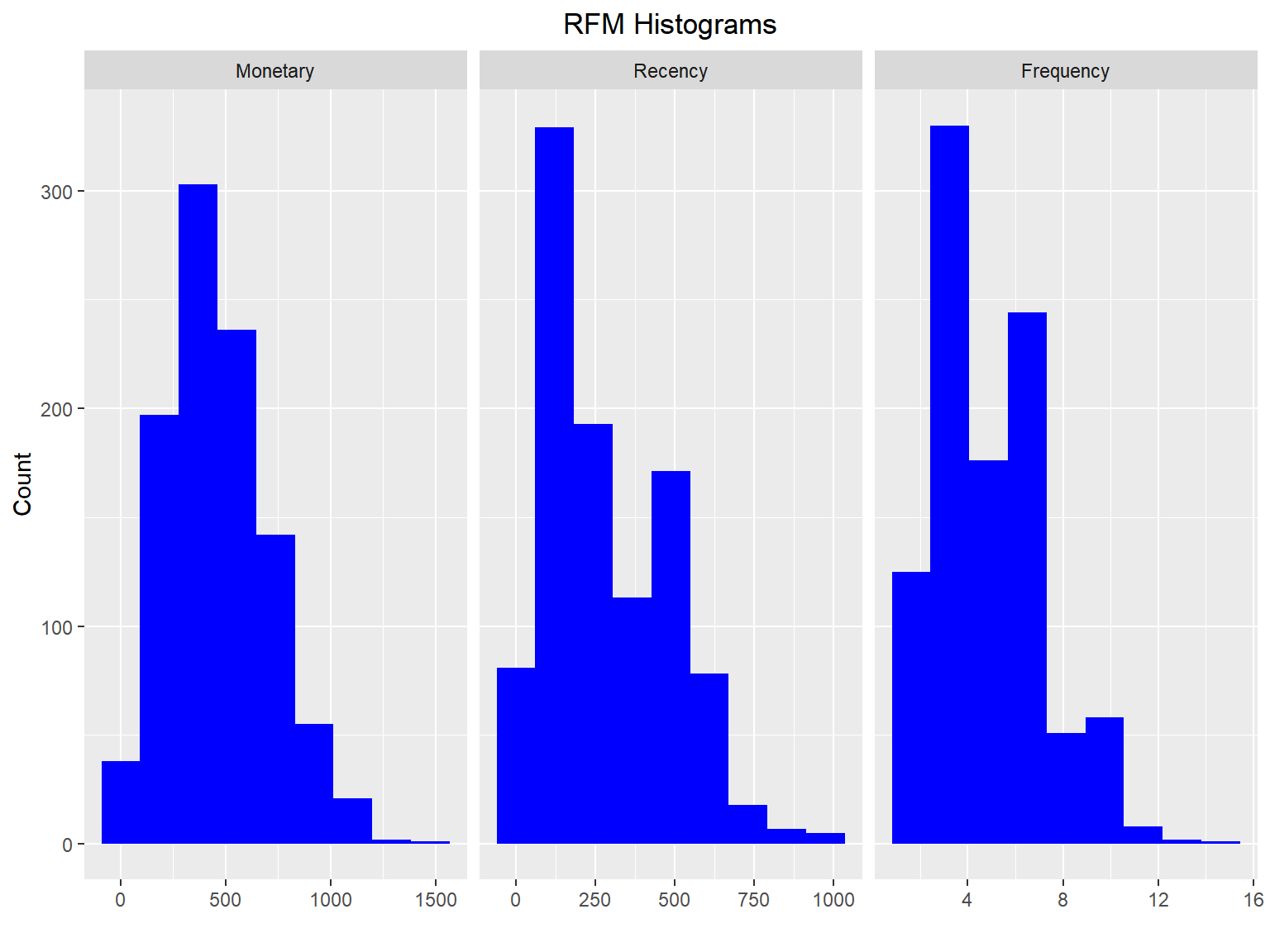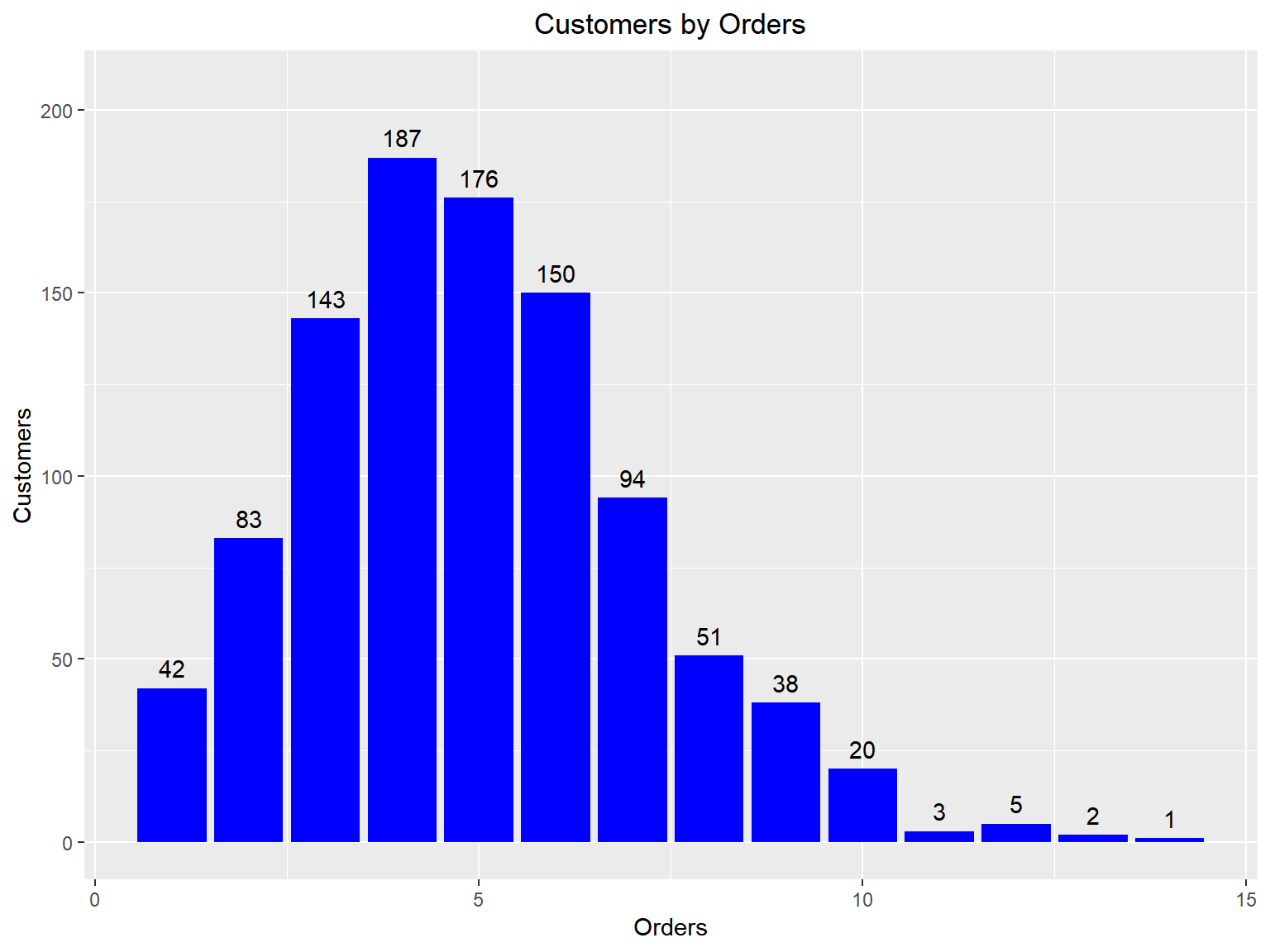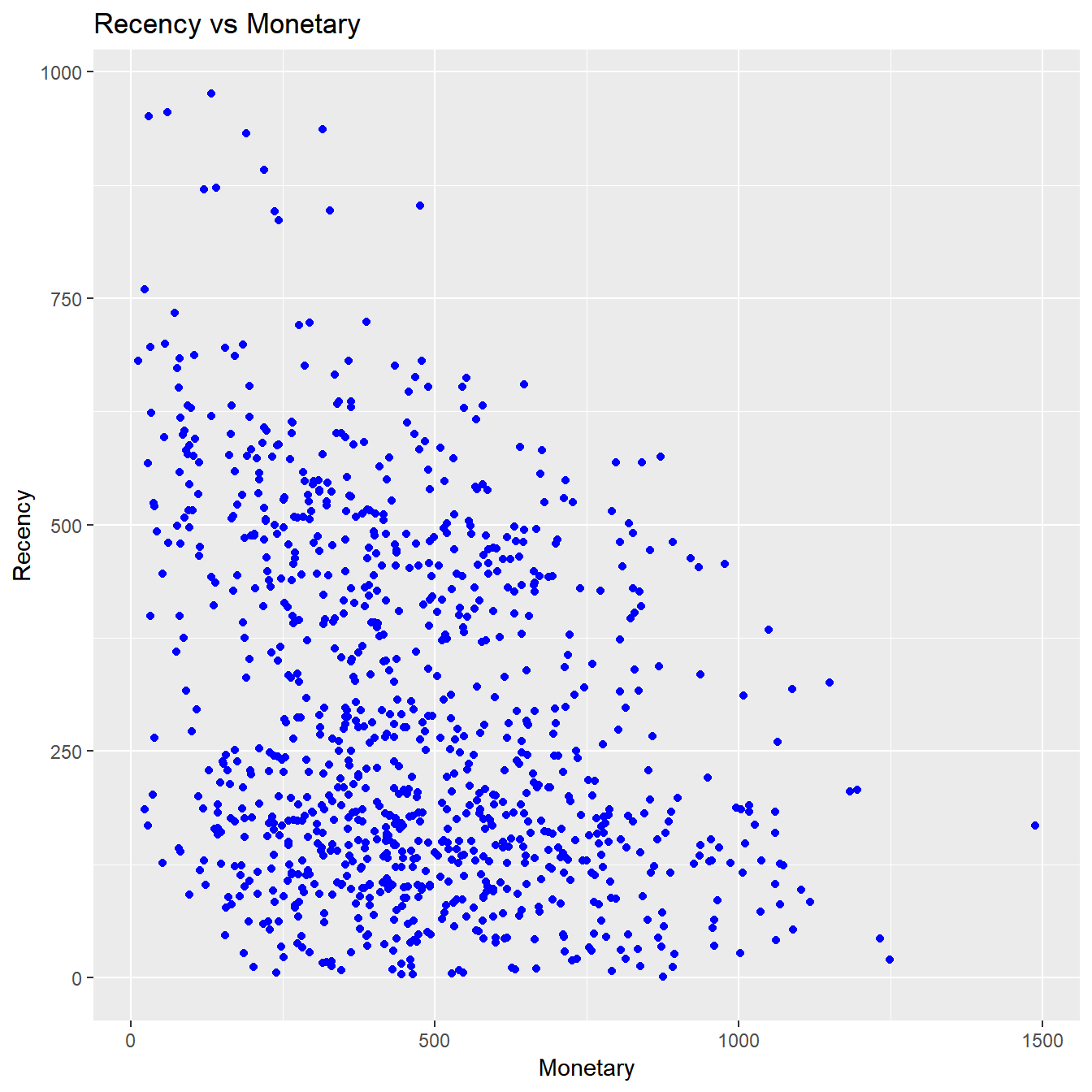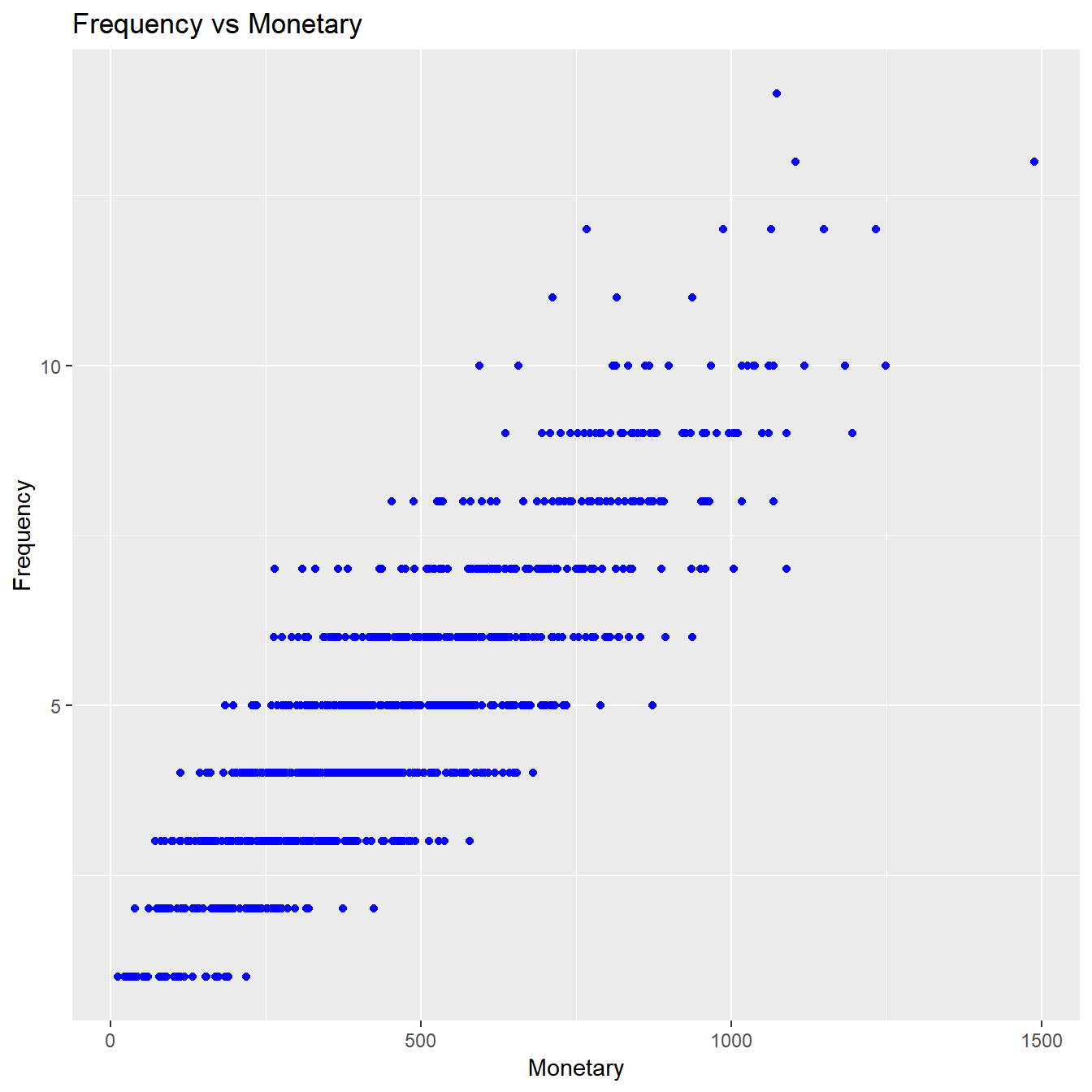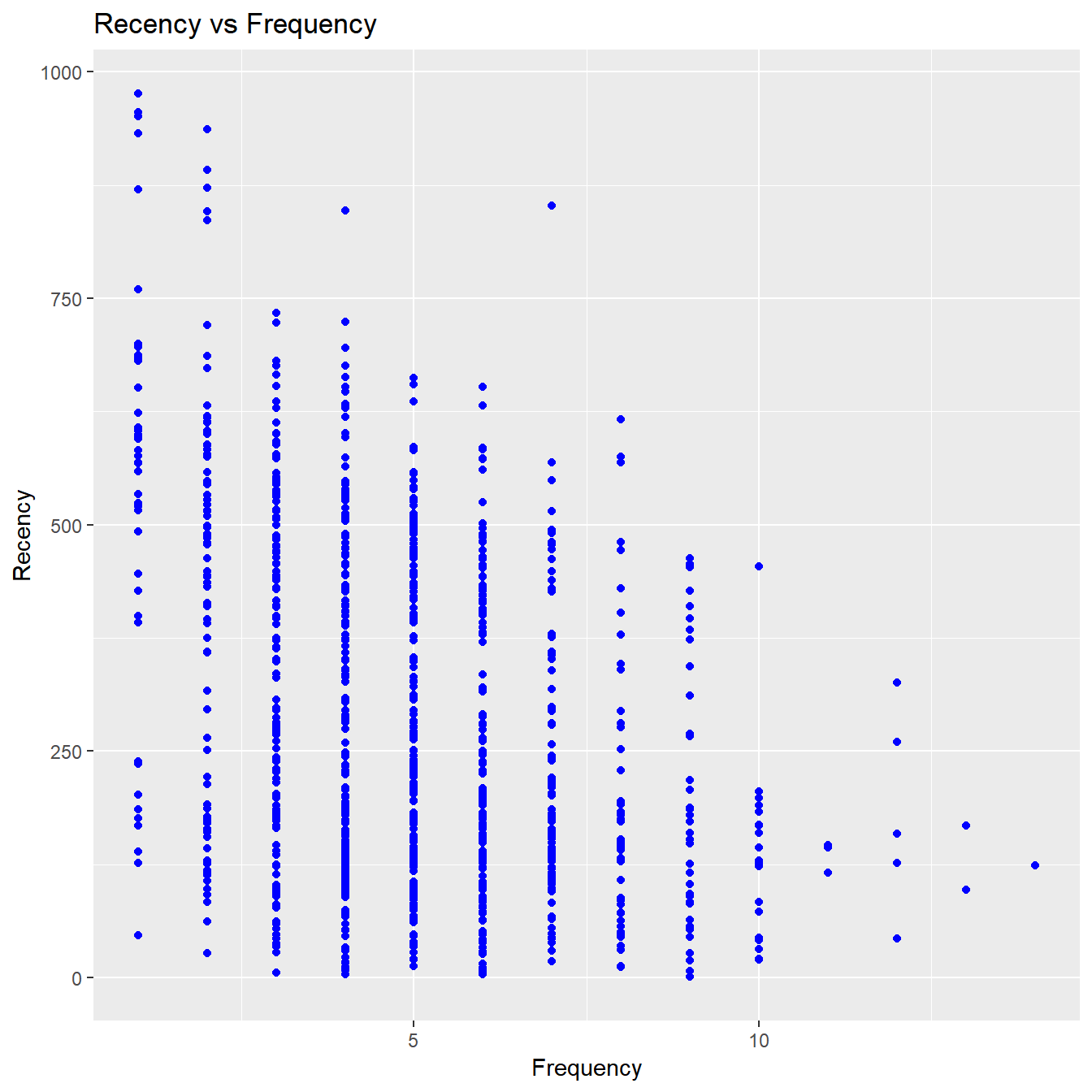Tools for RFM Analysis
Tools for RFM (recency, frequency and monetary) analysis. Generate RFM score from both transaction and customer level data. Visualize the relationship between recency, frequency and monetary value using heatmap, histograms, bar charts and scatter plots.
# Install rfm from CRAN
install.packages("rfm")
# Or the development version from GitHub
# install.packages("devtools")
devtools::install_github("rsquaredacademy/rfm")RFM (recency, frequency, monetary) analysis is a behavior based technique used to segment customers by examining their transaction history such as
- how recently a customer has purchased (recency)
- how often they purchase (frequency)
- how much the customer spends (monetary)
It is based on the marketing axiom that 80% of your business comes from 20% of your customers. RFM helps to identify customers who are more likely to respond to promotions by segmenting them into various categories.
To calculate the RFM score for each customer we need transaction data which should include the following:
- a unique customer id
- date of transaction/order
- transaction/order amount
rfm uses consistent prefix rfm_ for easy tab completion. Use
rfm_table_order() to generate the RFM score.
analysis_date <- lubridate::as_date('2006-12-31', tz = 'UTC')
rfm_result <- rfm_table_order(rfm_data_orders, customer_id, order_date, revenue, analysis_date)
rfm_result
#> # A tibble: 995 x 9
#> customer_id date_most_recent recency_days transaction_count
#> <chr> <date> <dbl> <dbl>
#> 1 Abbey O'Reilly DVM 2006-06-09 205 6
#> 2 Add Senger 2006-08-13 140 3
#> 3 Aden Lesch Sr. 2006-06-20 194 4
#> 4 Admiral Senger 2006-08-21 132 5
#> 5 Agness O'Keefe 2006-10-02 90 9
#> 6 Aileen Barton 2006-10-08 84 9
#> 7 Ailene Hermann 2006-03-25 281 8
#> 8 Aiyanna Bruen PhD 2006-04-29 246 4
#> 9 Ala Schmidt DDS 2006-01-16 349 3
#> 10 Alannah Borer 2005-04-21 619 4
#> amount recency_score frequency_score monetary_score rfm_score
#> <dbl> <int> <int> <int> <dbl>
#> 1 472 3 4 3 343
#> 2 340 4 1 2 412
#> 3 405 3 2 3 323
#> 4 448 4 3 3 433
#> 5 843 5 5 5 555
#> 6 763 5 5 5 555
#> 7 699 3 5 5 355
#> 8 157 3 2 1 321
#> 9 363 2 1 2 212
#> 10 196 1 2 1 121
#> # ... with 985 more rowsThe heat map shows the average monetary value for different categories of recency and frequency scores. Higher scores of frequency and recency are characterized by higher average monetary value as indicated by the darker areas in the heatmap.
rfm_heatmap(rfm_result)Use rfm_bar_chart() to generate the distribution of monetary scores
for the different combinations of frequency and recency
scores.
rfm_bar_chart(rfm_result)Use rfm_histograms() to examine the relative distribution of
- monetary value (total revenue generated by each customer)
- recency days (days since the most recent visit for each customer)
- frequency (transaction count for each customer)
rfm_histograms(rfm_result)Visualize the distribution of customers across orders.
rfm_order_dist(rfm_result)The best customers are those who:
- bought most recently
- most often
- and spend the most
Now let us examine the relationship between the above.
rfm_rm_plot(rfm_result)rfm_fm_plot(rfm_result)rfm_rf_plot(rfm_result)If you encounter a bug, please file a minimal reproducible example using reprex on github. For questions and clarifications, use StackOverflow.
Please note that this project is released with a Contributor Code of Conduct. By participating in this project you agree to abide by its terms.


